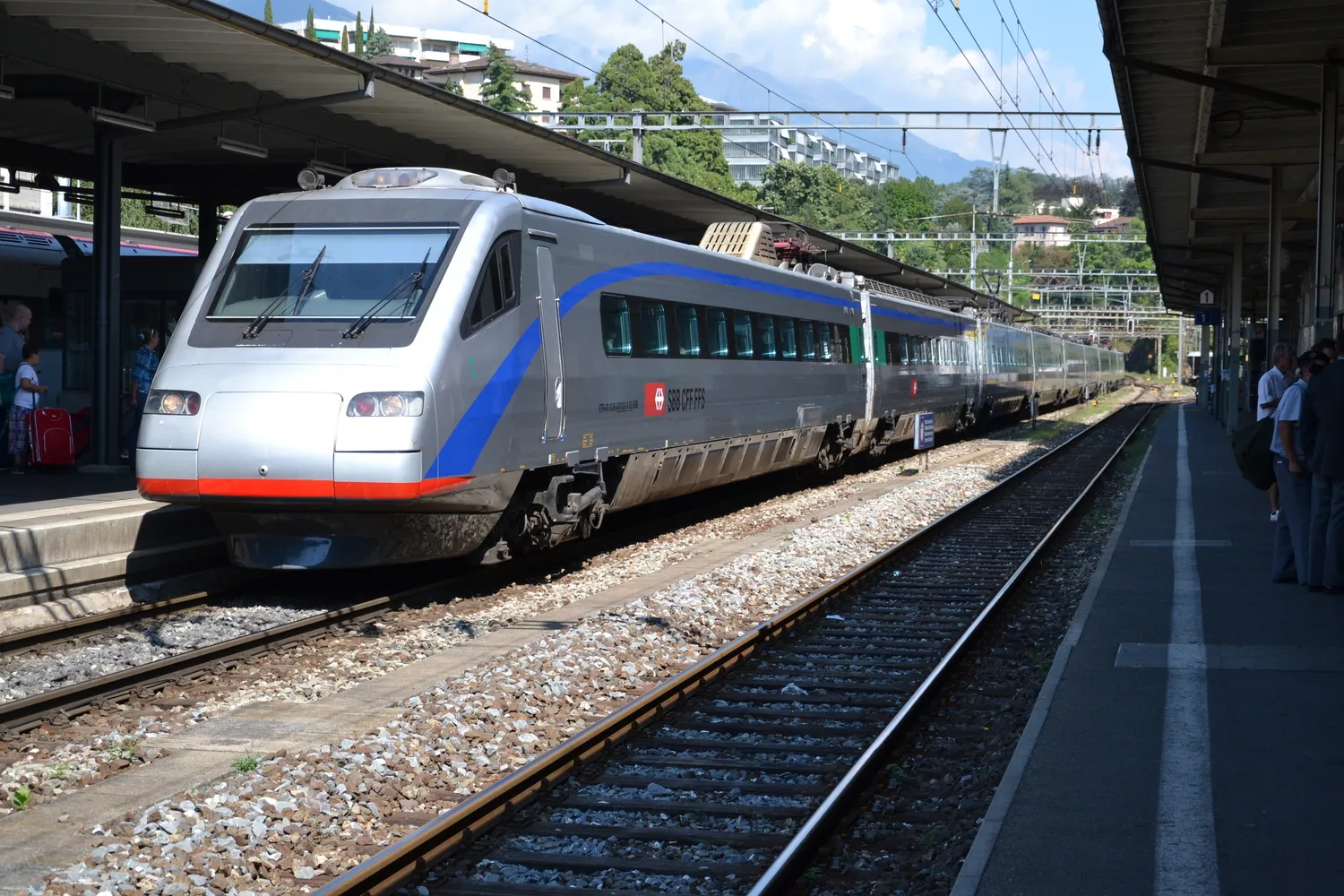
Source: commons.wikimedia.org
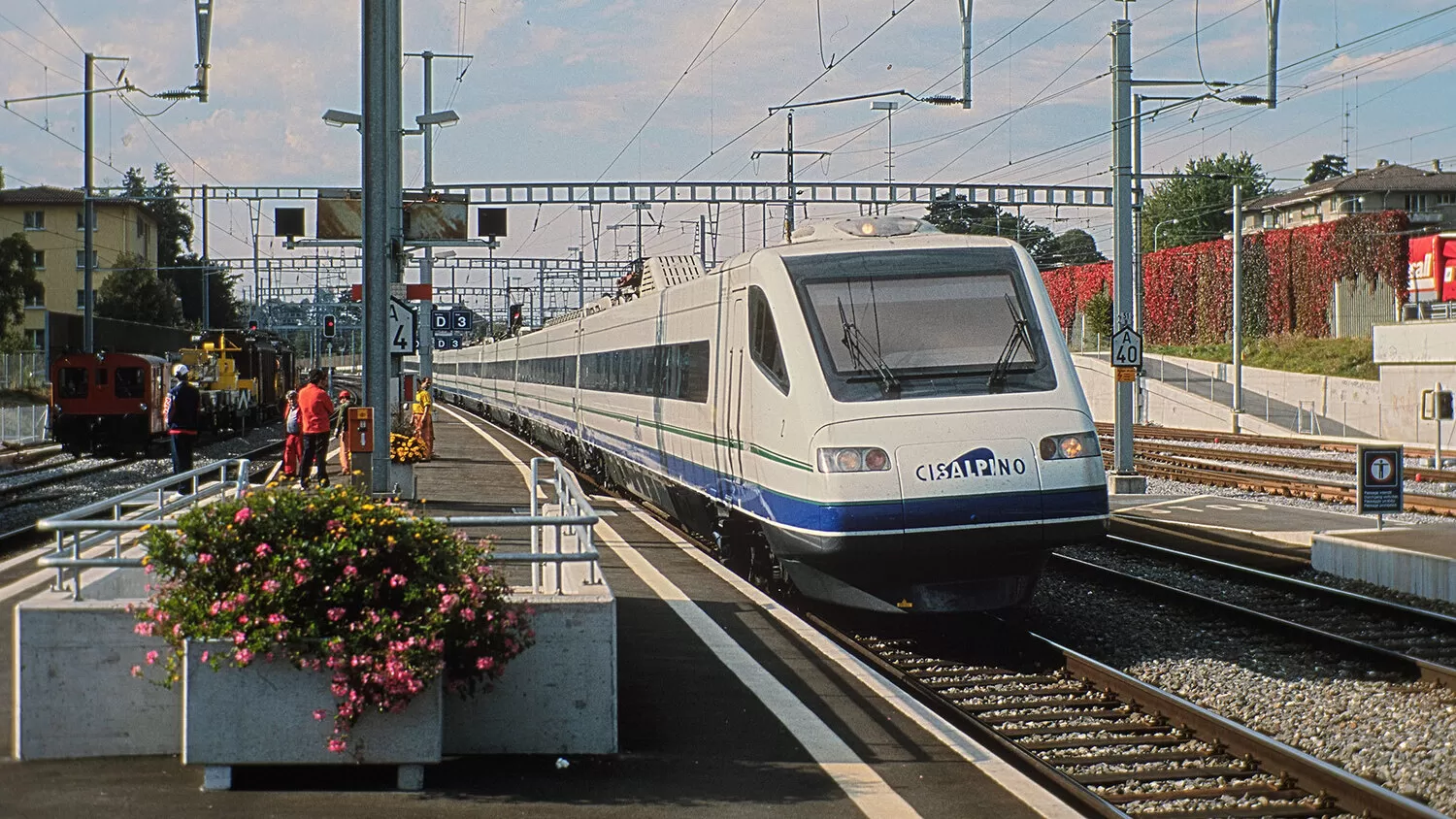
Source: cgn02.ch
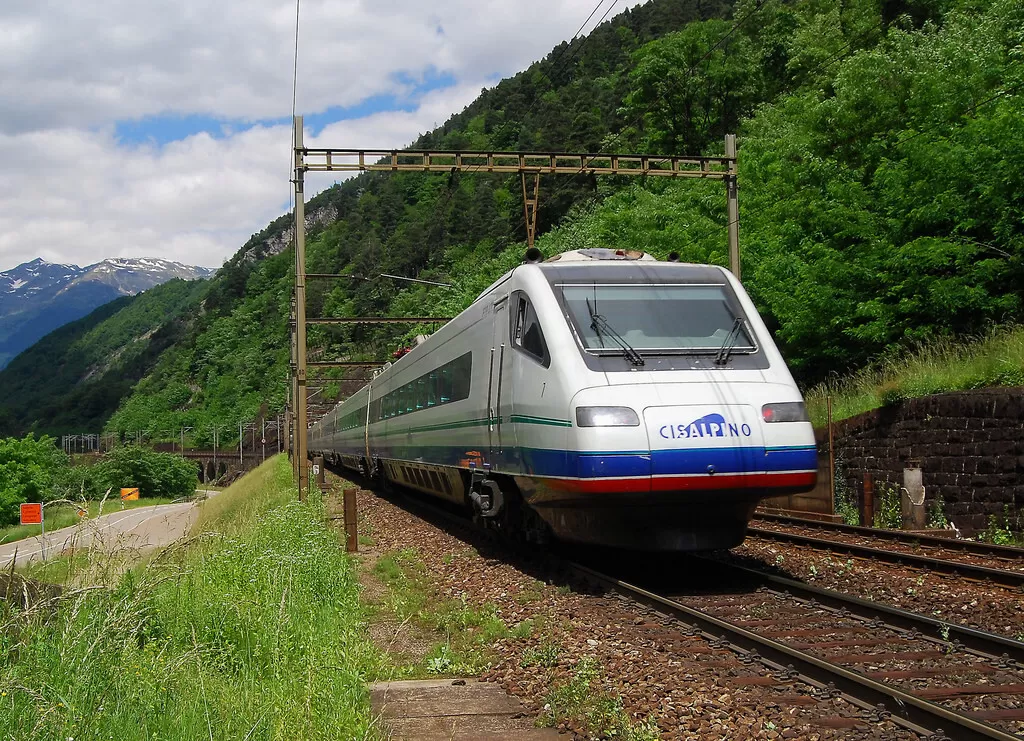
Source: maurizio messa
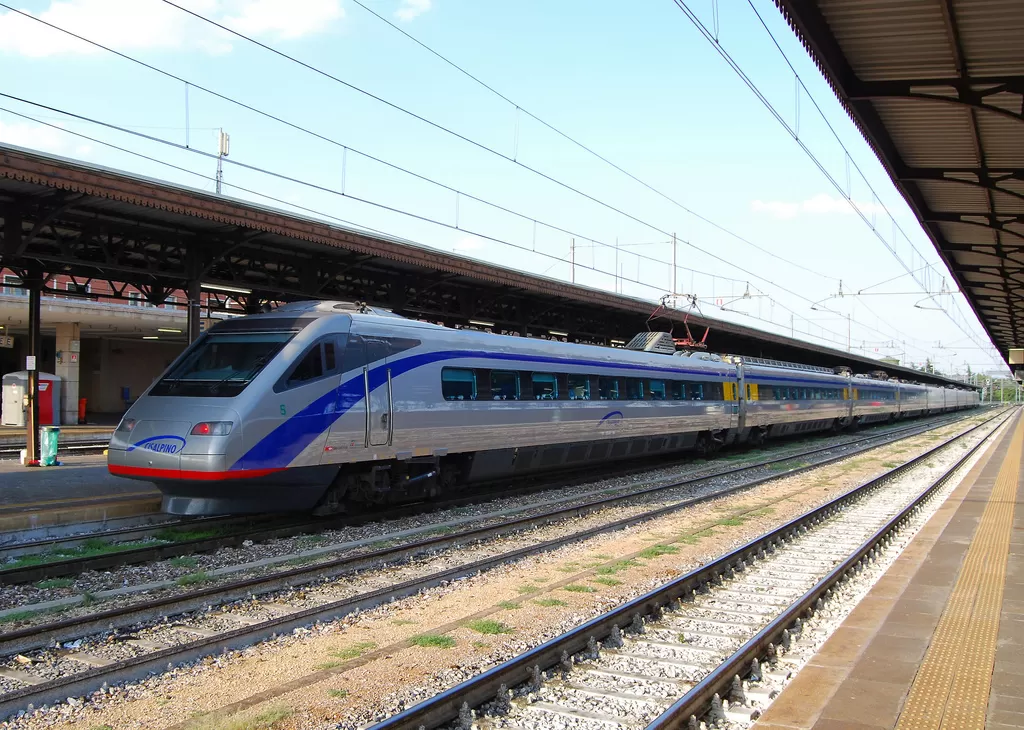
Source: maurizio messa
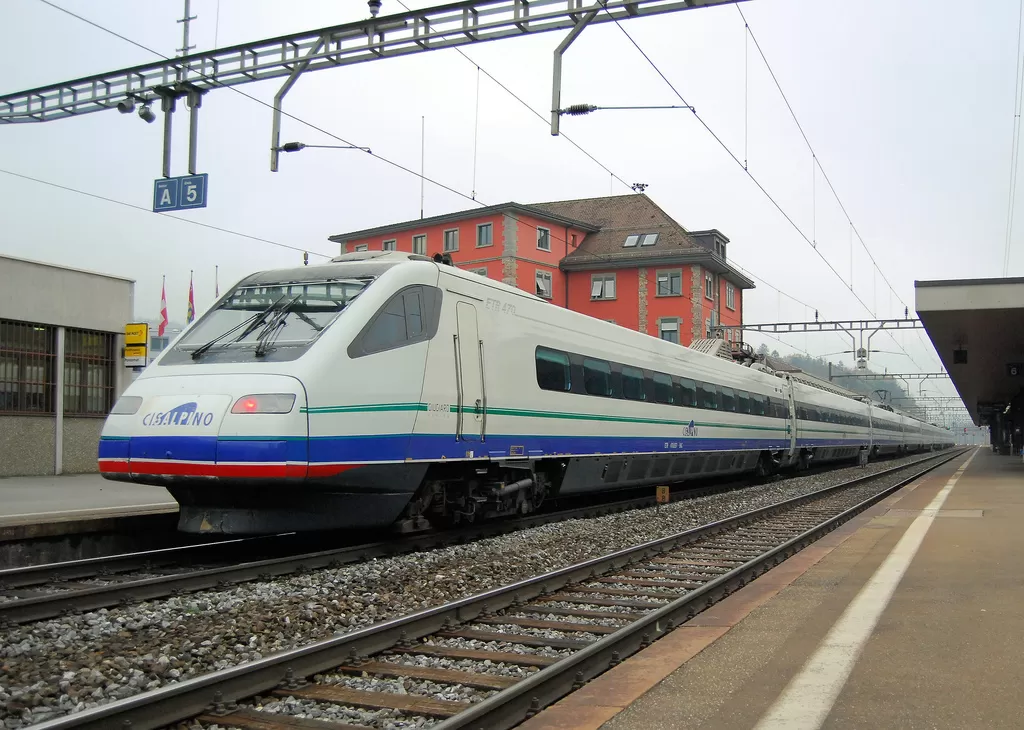
Source: maurizio messa
Also known as:
UIC / EVN numbering:
93 83 37-7093 83 54-7093 83 04-7093 83 94-7093 83 64-7093 83 44-70Vehicle type:
Registration country:
3 kV DC
*train length
26'900 mm*
*intermediate car length
27'650 mm*
*head car length
8'900 hp
1993
The need for tilting trains like the Pendolino arose from the desire to reduce travel times on curvy mountain routes between Switzerland and Italy without constructing new high-speed lines. The Swiss Federal Railways (SBB) sought to replace their aging RAe TEE II electric express trains, which had been in service since the 1960s and were later rebranded as RABe EuroCity (EC) after the discontinuation of the Trans Europ Express in 1988.
In February 1991, the Pendolino prototype ETR.401 underwent test runs in Switzerland, leaving a positive impression. Subsequently, on November 25th, 1993, the Cisalpino AG was established, primarily by Ferrovie dello Stato (FS), SBB CFF FFS and the Bern-Lötschberg-Simplon Railway (BLS).
In December 1993, SBB CFF FFS decided to procure modified ETR.460 units from FIAT Ferroviaria for 237 million Swiss Francs. 
The ETR.470 trains were designed to operate at speeds up to 200 km/h, featuring tilting technology to navigate curves more efficiently. It was based on the ETR.460 Pendolino, with adaptations to accommodate the Swiss 15 kV / 16.7 Hz AC system in addition to the Italian 3 kV DC system. Each nine-car trainset was equipped with two pantographs: one for the Swiss network and another for the Italian network. The trains featured FIAT’s active tilting system, allowing for a maximum tilt of 8 degrees, enabling higher speeds on curved tracks while maintaining passenger comfort.
Each nine-car trainset offered both first and second-class accommodations, along with a restaurant car operated by Elvetino. The first-class section featured 2+1 seating, while the second class had 2+2 seating arrangements. The interior design aimed to provide comfort during high-speed travel, with seating arrangements and amenities catering to long-distance passengers.
Each trainset has the following configuration: BAC1 + BB1 + RA1 + RB + BB2 + BAH2 + RA2 + BB2 + BAC2
where:
BAC1 type coach: 1st class, driver’s cab, Swiss pantograph, motorized unit;
BB1 type coach: 1st class, smoking section, motorized unit;
RA1 type coach: 1st class, Italian pantograph, trailer car;
RB type coach: restaurant-bar;
BB2 type coach: 2nd class, motorized unit;
BAH2 type coach: 2nd class, handicapped seating, motorized unit;
RA2 type coach: 2nd class, smoking section, Swiss pantograph, trailer car;
BB2 type coach: 2nd class, motorized unit;
BAC2 type coach: 2nd class, driver’s cab, Italian pantograph, motorized unit;
1996
Extensive test runs were conducted with the "Treno Zero" unit to evaluate performance and make necessary adjustments before commencing regular passenger services. Despite these preparations, the ETR.470 faced numerous technical challenges during its operational life, including issues with the tilting mechanism, braking systems, and overall reliability.
From the outset, the ETR 470 struggled with reliability issues. These problems stemmed from both mechanical failures and software malfunctions, particularly concerning the tilting system and braking performance. The interaction between different signaling systems in Italy, Switzerland, and Germany also led to operational difficulties.
Frequent breakdowns and malfunctions plagued the train, leading to delays and cancellations. Swiss passengers, accustomed to the punctuality of SBB services, were particularly dissatisfied with the unreliable Cisalpino trains. The Swiss press often criticized the ETR.470, and it eventually earned the nickname "Pannolino" (a play on the Italian word "Pendolino" and "pannolino", meaning diaper) due to its frequent “accidents” and need for repairs.
Sources: https://www.hochgeschwindigkeitszuege.com/italien/etr-470-cisalpino.php
2009
Despite plans for their replacement with the next-generation ETR.610, delays necessitated the continued use of ETR.470 units for services between Switzerland and Italy.
Because of its long series of breakdowns, the ETR.470 was very poorly perceived in Switzerland. The maintenance costs were four times higher compared to the ICN. The final decision to retire the trains was taken after one of them caught fire on May 17th, 2009, in Ambrì. The spokesperson for the Swiss Association for Transport and Environment described them as "not worthy of the Swiss Federal Railways", while the chief executive of Swiss Federal Railways said he wanted to "put an end to this horror". After unsuccessful attempts by SBB to sell the trains, 3x ETR.470 trainsets are scrapped end 2015 - beginning 2016 in Kaiseraugst. Unit 470 n.09, leased to Trenitalia, made its final trip by December 2015 and is stored in Wiler. On June 15th, 2017, cars 44-70 059 + 64-70 268 + 04-70 309 are transferred to Chiasso to be handed to FS to provide parts to repair ETR 485 36. Head car 34-70 0091 is acquired by SBB Historic in Olten and the other 5x remaining cars are sent to be scrapped.
Conversely, Ferrovie dello Stato (FS) operated their 5x units on the Rome - Reggio Calabria route without significant issues. New fire safety regulations required FS to modify these units by 2020. Following the acquisition of the Greek operator TrainOSE by Ferrovie dello Stato Italiane in 2017, it was announced in 2019 that the ETR.470 units would be transferred to Greece, where they are also designated as ETR 470. After various technical adjustments, regular operations between Athens and Thessaloniki commenced in May 2022.
1 Coach 34-70 009 is preserved by SBB Historic until July 2024 . On July 15th, 2024, HECH, the umbrella organization of the Historic Railways of Switzerland, announced that the end car is for sale. Interested parties have until July 31st, 2024, to place a bid. Since no one offered to buy, the remaining end car of the ETR 470 n.09 "Insubrico" was scrapped on site in Erstfeld before the end of the year.
Sources: https://railcolornews.com/2024/12/26/passenger-uncertain-future-for-the-final-part-of-etr-470-in-switzerland/, https://swissrail.groups.io/g/main/topic/re_etr_470_009/18200407
Do you have additional informations regarding this vehicle?
Help us writing the history of ETR.470! Your knowledge is precious for us and the entire community, do not hesitate to share your facts, photos or videos:
Latest update on the 19th of January 2025 at 21:55
Contributor(s): Tudor C.
Discussion forum

















